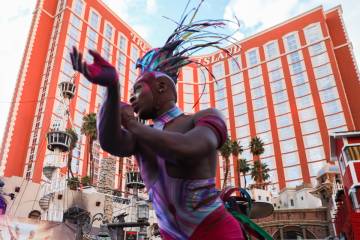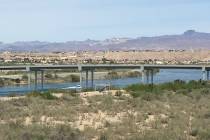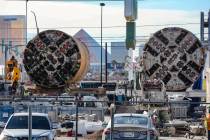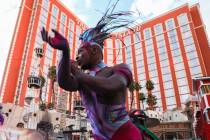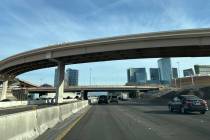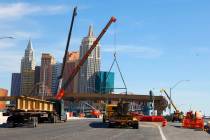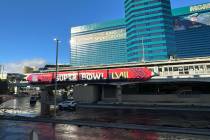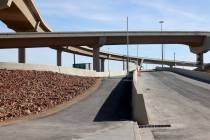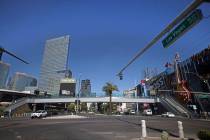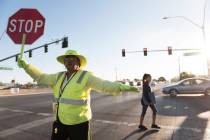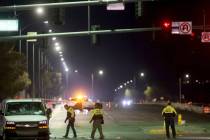Drivers of expensive cars less likely to brake for pedestrians
If you drive an expensive vehicle, odds are you are less than courteous to pedestrians.
That’s according to a UNLV study that found drivers of higher-priced automobiles were less likely than drivers of less expensive vehicles to stop for a pedestrian at a mid-block crosswalk with flashing lights.
The odds that a driver will stop for a pedestrian dropped 3 percent for every $1,000 spike in the vehicle’s price, the study found.
“Individuals that had more wealth were more likely to display unethical behavior,” said Courtney Coughenour, a public health professor at UNLV and the lead author of the study.
Though some of the car brands one thinks of as “expensive’” were seen in the study, other high-priced vehicles were also prevalent, Coughenour said.
“They were expensive cars, but they were like a Toyota Tundra or something like that, more on the expensive end,” she said. “There were some Audis and Lexuses, and those sorts of cars, but there were definitely less of them.”
The research team filmed research assistants crossing the road in front of 461 cars, whose values were assessed using Kelley Blue Book pricing categories.
The study was conducted at two unnamed mid-block crosswalks near schools in areas of Las Vegas with median household incomes between $30,000 and $37,000. A white male and female and an African American male and female, all in their 20s, served as the pedestrians.
Though drivers of the more expensive vehicles fared the worst, most drivers weren’t very mindful of pedestrians, according to the study. Only 28 percent of all drivers halted for waiting pedestrians.
“That was probably the biggest take home on this,” she said. “Yielding overall was pretty low, which is not good for pedestrian safety as a whole. I was a little shocked at how low it was.”
Coughenour said both motorists and pedestrians can work to improve the situation.
The research team said its findings are important to public health, since even low-speed collisions can be fatal for pedestrians.
The risk of severe injury for a pedestrian struck by a vehicle is 10 percent at 16 mph, 25 percent at 23 mph, 50 percent at 31 mph, 75 percent at 39 mph and 90 percent at 46 mph, according to the AAA Foundation for Traffic Safety.
Nevada Department of Public Safety figures show that 2017 was the deadliest year for pedestrians in the state, with 90 deaths. The number fell to 82 in 2018 — the first statewide decline in nine years — and 70 in 2019.
To maintain that trend, Coughenour said, “drivers need to be made aware that they legally have to yield.
“It’s hard to say whether they’re not yielding because they don’t know the laws or because they don’t want to yield,” she said. “Further study is needed to examine that. Until then, the bigger thing is driver education.”
State Route 159 work
Crack sealing on a 9-mile stretch of state Route 159 leading to Red Rock Canyon National Conservation Area will affect traffic for several months.
The work began last week and runs through May 14, according to the Nevada Department of Transportation.
“Crack filling prevents further roadway deterioration for a smoother, safer driving experience,” said NDOT spokesman Tony Illia. “It’s a cost-effective maintenance solution that extends the roadway’s life cycle.”
Work will be carried out in 1-mile increments from Blue Diamond Road to the Red Rock Canyon Visitor Center between 6 a.m. and 2:30 p.m. Tuesdays through Thursdays.
Flaggers and a pilot car operation will be used to escort motorists through active construction zones.
Trailhead parking areas within work zones will be closed while flagging operations are active. Bicyclists must also follow all applicable traffic laws, including stopping for flaggers.
Send questions and comments to roadwarrior@reviewjournal.com. Please include your phone number. Follow @mickakers on Twitter.







